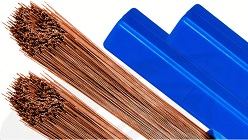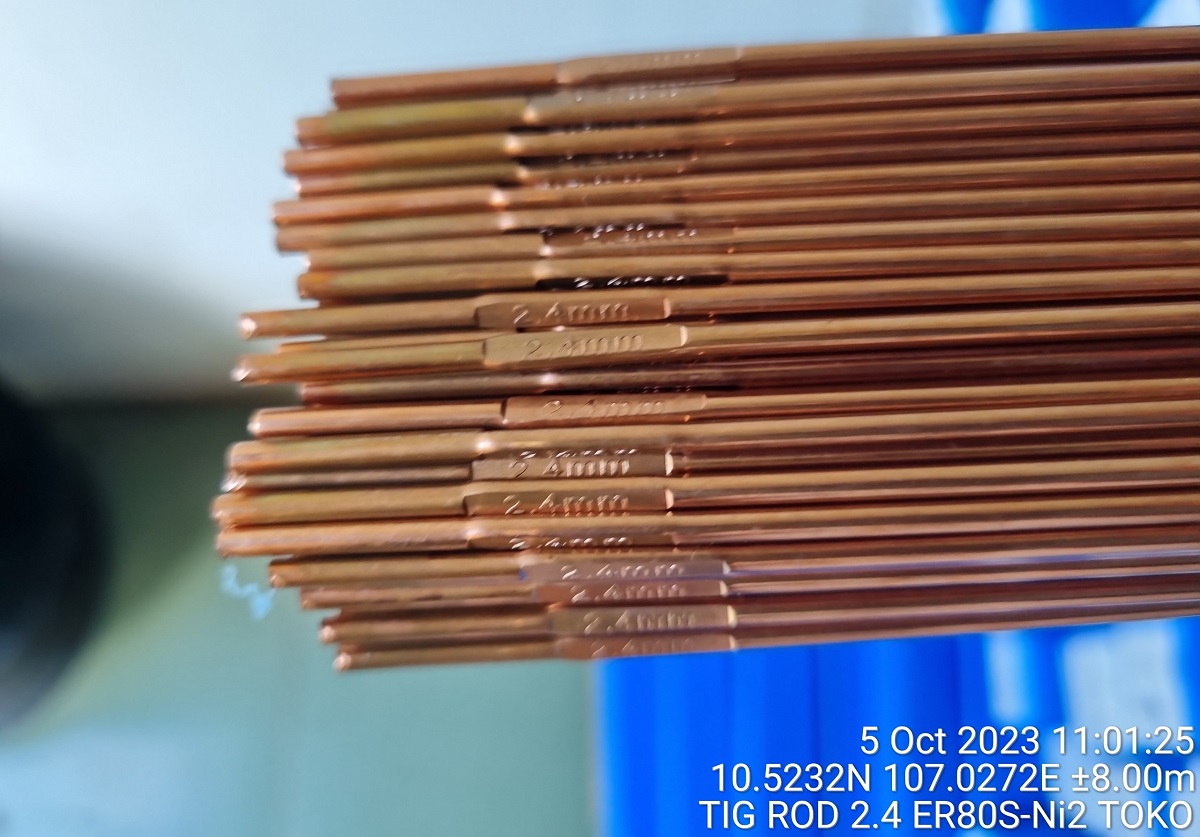
TOKO brand, alloy AWS A5.28 ER80S Ni2
is a copper-coated solid wire available in bright finish, gives smooth flow,
stable arc and spatter free under optimum welding conditions. It is
specially designed to produce weld metal with increase strength and notch
toughness at o temperature up to minus 60 C. It gives radiographic quality
welds. Ideally suitable for welding fine grained and Nickel steels.
Typical applications include
containers and piping systems and tanks used for storage, transportation of
liquefied propane and butane, A&P brackets etc.
CLASSIFICATION: AWS A5.28 Class ER80S-Ni2 /
ASME SFA 5.28 Class ER80S-Ni2 (UNS K21240), EN10204 and EN 440 G2 Ni2, EN
1688 W2 Ni2
Chemical Composition Limits
Weight(%
C
Mn
Si
P
S
Ni
Cu
OET
ER 80S-Ni2
0.12 max
1.25 max
0.40-0.80
0.025 max
0.025
2.00-2.75
0.35 max
0.50 max
0.05
0.81
0.510
0.002
0.006
2.670
0.12
0.30

These alloys have higher strength and require good toughness at temperatures as low as -60°F.
|
Material |
Ultimate Tensile Strength |
Offset Yield Strength 0.2 % |
Elongation (%) |
||
|
psi |
MPa |
psi |
MPa |
||
|
ER 80S-Ni2 |
89,900 |
610 |
76,850 |
520 |
28 |
TOKO brand, alloy ER 80S-Ni2 is a mild and low alloy steel TIG, MIG and SUB-ARC wire used for welding. Read or download MTC data of ER80S-Ni2.
The information contained or otherwise referenced herein is presented only as “typical” without guarantee or warranty, and TOKO Corporation expressly disclaims any liability incurred from any reliance thereon. Typical data and Test results for mechanical properties, deposit or electrode composition and other properties were obtained from a weld produced and tested according to prescribed standards, and should not be assumed to be the expected results in a particular application or weldment. Actual results will vary depending on many factors, including, but not limited to, weld procedure, plate chemistry and temperature, weldment design and fabrication methods. Users are cautioned to confirm by qualification testing, or other appropriate means, the suitability of any welding consumable and procedure before use in the intended application.


